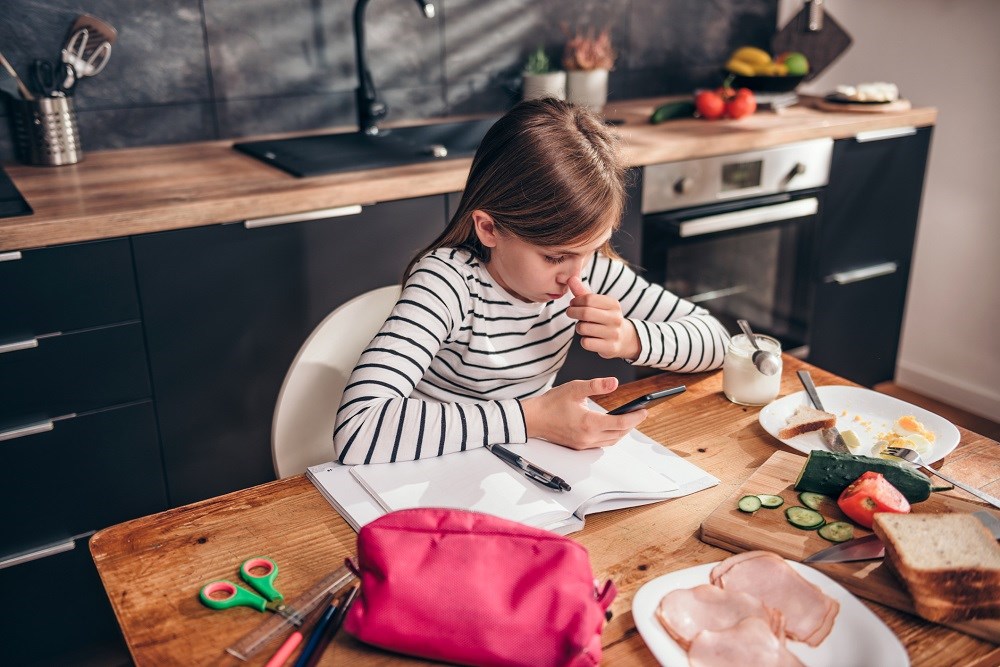‘I eat present simple for breakfast!’ Using real life to encourage genuine language
Lesson ideas sometimes come at random, or the most unlikely, moments. Inspiration hit David when his day didn’t have the best start … and led him to take a different approach to reviewing present simple for routines with his young learners. How? By simply focusing on real life.
Coffee and pastry in hand, I hurriedly entered the teachers’ room with a half hour breathing space to get ready for my morning lesson – two hours with my pre-intermediate group of 10–11-year olds.
Having woken up late that morning and still feeling the effects of that desperate dash for the bus, I was not in the best of moods. Flicking through the learning plan for my group didn’t make me feel much better – daily routines. Ugh! A whole unit of sanitised language featuring a cast of cartoon characters going about everyday tasks with insufferable joy:
“I wake up at 7 a.m. and then I get up! I drink a cup of milk and I have eggs and fruit for breakfast.”
“Bop gets up at 6.30 a.m. He does his morning exercises and then washes his face. After that …”
Boring! And unrealistic too I thought. Here was a selection of routines all featuring ‘positive’ examples of people getting up early, having a wholesome breakfast, brushing their teeth, and going about their day with a smile on their face.
Nothing like the start to the day I had just had.

And the language … repetitive present simple sentence with little variety beyond one or two negative forms and the sparing using of adverbs and sequencing words.
All structures and vocabulary they had seen before, of course, the previous year in their elementary course. This was a bright bunch of kids and I knew they would struggle to engage without more of a challenge.
“Why are we going over this language again?” I asked myself more in rhetorical complaint than anything else and I sipped my coffee and finally took a bite of what would be that morning’s breakfast.
“Why are we going over this language again?” I asked myself more seriously. I looked at the pastry and coffee hastily bought from the school café, the result of an all too frequent rush to get out of the house in the morning and thought about how I would describe my actual routine.
‘My alarm rings at 6.30 a.m. but I usually ignore it, fall asleep again and suddenly wake up just after 7. I then run into the bathroom, splash water on my face and quickly brush my teeth. I get dressed in two minutes. Sometimes, I can’t find my keys and spend five minutes looking for them (they are usually in my coat pocket!)
If I have enough time, I make a quick breakfast – cereal or a slice of toast – and grab a cup of coffee. If I am very late, I grab a banana or skip breakfast altogether, put on my coat and shoes and run to the bus stop. My bus leaves at 7.20 a.m. so I often have to run to get there on time.
I arrive at school at 7.45 and have my first lesson at 8.30.’

Maybe it was the caffeine kicking in but at this point, I realised something. This was what my students needed. Not the perfect step-by-step routine of the coursebook characters promoting some idealised vision of a healthy and positive start to the day, but something more real to life.
Linguistically, it was something more challenging for them as well. The core vocabulary was familiar but we also had the opportunity to introduce some terms that portrayed a sense of rushing like splash my face with water and grab breakfast. There were also structures such as conditionals (If I have enough time, I make a quick breakfast.) to stretch the more able ones.
Here was an opportunity to bring some genuine language into the classroom and actually describe real life. I therefore reworked my lesson plan taking the focus away from Bip and Bop the aliens with a perfect human life, and introduced a boy named Tom.
I described his morning along the lines of my own with the students tasked to complete a timeline of his morning. They then added illustrations and reconstructed my text. We discussed the realities of a busy family trying to get ready in the morning and it soon emerged that plenty of the children in the class often had to rush in the morning or witnessed their parents doing the same.

More language started to emerge as they described their real-life routines. Phrases such as ‘sometimes, I finish my homework while I am eating breakfast’ and ‘on P.E. days, we often have to go back home to grab my gym bag’ came up, and for the first time in my teaching career, I had a group of students buzzing about writing their daily routine in their notebooks.
In order to complete the task, they ended up using a much wider variety of vocabulary, and got some exposure to structures beyond the original target of reviewing present simple yet again. The end product was something much more true to life and memorable than Bip and Bop’s perfect morning.
Since then, I have always looked to find links between our language goals in the classroom and the student’s real life. By incorporating their experiences and acknowledging the realities of life, we can create much more meaningful opportunities for learning.
What about you? Have you had any similar moments of bringing ‘real life’ into the classroom? Do share your experiences in the comments below or on our social media channels.

Comments
Write a Comment
Comment Submitted